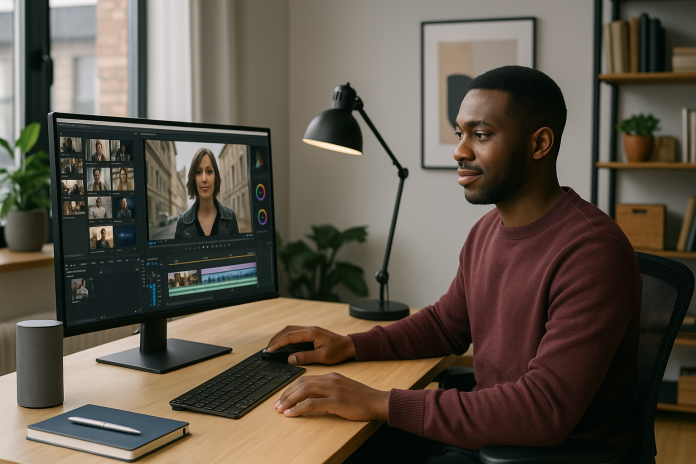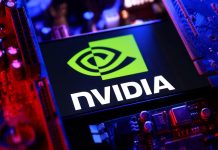Picture this: you type a few lines, hit generate, and in seconds a full video plays with characters, voice, movement, and mood all included. That’s no sci-fi fantasy. The next frontier in content is AI video. In 2025, tools like Sora, Veo 3, Hedra, and ElevenLabs are pushing creators, storytellers, marketers, and even hobbyists into a new era of instant visual storytelling.
What’s Driving the Shift
- Demand for richer content: Audiences want more immersive media – video wins attention.
- Lowering production cost & complexity: Filming, editing, sound mixing – AI cuts much of those barriers.
- AI models reaching new quality thresholds: We’re seeing realism in motion, lip sync, scene consistency, even audio generation.
- Ethics, regulation & watermarking: With power comes responsibility – tools now embed metadata, forbid misuse, or limit depiction of people.
Spotlight: Sora (OpenAI)
What It Is & How It Works
Sora is OpenAI’s flagship text-to-video model that can generate short video clips from text or remix existing videos.
You can upload an image or video in your prompt or just use text, then Sora tries to match what you asked visually.
In its public form, video lengths are generally capped (20 seconds for many users) and resolution is limited depending on subscription.
Strengths & Innovations
- Remix features: you can reimagine elements in a video (change style, remove or add objects).
- On-device ambition: a recent project called On-device Sora proposes running diffusion-based video generation on smartphones, using clever techniques to reduce memory and computation needs.
- Transparency and metadata: Sora-generated content is tagged with C2PA metadata to signal it’s AI-generated.
Challenges & Criticisms
- Training data opacity: The Washington Post uncovered that Sora can replicate logos, watermarks, and scenes suspiciously close to copyrighted works, raising questions about sources used.
- Visual artifacts: A study on Sora-generated videos identified common defects, boundary errors, texture noise, object mismatches, movement glitches – that degrade realism.
- Bias & representation: Investigations have flagged sexist, ableist, and racial biases in how Sora portrays people or jobs, reflecting issues embedded in its training data.
- Limits on human depiction: To reduce misuse (e.g. deepfakes), Sora imposes constraints on generating realistic humans in many cases.
Spotlight: Veo 3 (Google / DeepMind)
What It Is & What It Brings
Veo 3 is Google’s latest video generation system. Unlike earlier models, it supports audio, speech, ambient effects, and more realistic physics and lip sync.
DeepMind claims Veo 3 allows you to add sound effects, dialogue, ambient audio – all built natively.
At Google I/O 2025, Veo 3 was shown to transform text or image prompts into video, handling movement, lighting, and physics more naturally than past models.
Adoption & Use Cases
- It’s being integrated into YouTube Shorts capabilities, letting creators generate short AI-driven clips.
- As a competitor to Sora, Veo 3’s audio integration sets it apart: you don’t need a separate voice or sound pipeline.
Limitations & Next Steps
- Currently restricted regionally (U.S. first) and possibly by account types.
- Because it’s newer, the user base and public outputs are more limited than Sora so far.
- Managing alignment between video and speech/audio requires extremely tight modeling; mistakes (like lip sync errors) remain possible.
Spotlight: Hedra
What It Is & Focus
Hedra is a generative media platform that supports video, images, and audio, with particular emphasis on character-based video and avatar creation.
Hedra’s “Character 3” pipeline allows generating video by supplying an image, audio, and a prompt. It is especially strong at lip sync and expressive facial animation.
A recent review notes it lets creators produce engaging videos even without video production skills, by combining image, text, and audio inputs.
Strengths & Unique Features
- Good for avatar-driven content: educational, marketing, social media – where a “talking persona” matters.
- Realistic facial expressions and movements tied to voice/audio input.
- Lower barrier to entry: non-technical users can produce video from static assets + prompt.
Weaknesses & Things to Improve
- It is less suited for full-scene cinematic environments like landscapes or complex scenes (vs Sora or Veo).
- Quality of background detail, motion dynamics, or physics is usually less polished.
- Output duration and resolution cap might be lower depending on plan or pipeline constraints.
Spotlight: ElevenLabs
What It Offers & Where It Fits
ElevenLabs is best known for AI audio tools: text-to-speech, voice cloning, and now expanding into supporting video workflows.
Their tools allow creators to add voiceovers, sound effects, and audio effects to videos within one ecosystem. You can sync narration, translate/dub, generate background music, or overlay AI voices.
They also launched a video-to-sound generator: you upload silent video, and the AI suggests matching ambient sound effects.
Strengths & Use Cases
- Makes the audio side of video production much easier and more seamless.
- Ideal for content creators who already generate visual content (via Sora, Veo, Hedra) and now need professional-grade narration and sound design in one place.
- Multilingual, emotional speech, tone adjustment, and sync features.
Constraints
- It does not generate visuals (video frames) by itself; it complements video tools.
- The quality of generated voice vs real voice still has subtle differences; sensitive audiences may spot synthetic speech.
- Ethical concerns around voice cloning, impersonation, and proper licensing of voice data.
Putting It All Together: Workflows & Synergies
This is where the magic happens – using these tools in tandem rather than alone:
- Generate video visuals with Sora or Veo 3.
- Add character/avatars or refine faces using Hedra’s character pipelines.
- Overlay narration, voiceover, sound design, ambient effects via ElevenLabs.
- Edit, remix, loop scenes using features in Sora or downstream editing tools.
- Always ensure watermarks / metadata tags are preserved for traceability.
For example, you could prompt Sora for a sci-fi scene, use Hedra to insert a talking avatar, then polish the audio layer with ElevenLabs for multilingual voiceovers, and finally push short clips via YouTube Shorts using Veo 3 integration.
Future Trends & What to Watch
- Longer, more complex videos: From 8–20 seconds toward multi-minute narrative scenes.
- On-device generation: Projects like On-device Sora show that mobile video AI is possible.
- Hybrid AI-human workflows: AI does the heavy lifting; humans refine key parts like emotion, storytelling, final cuts.
- Stronger regulation & watermarking: Laws may require clear labeling, provenance metadata, and limits on mimicking human likeness.
- Open models vs proprietary control: Access, equity, and ethics will steer who controls these tools.
- Smarter audio-video fusion: Better alignment between visuals and sound (lip sync, scene ambience, emotional tone).
Final Take
We are at a pivotal moment in content creation. Visual storytelling is no longer limited to big studios. With Sora pushing cinematic visuals, Veo 3 combining audio-video realism, Hedra enabling expressive avatars, and ElevenLabs refining the sound layer, creators have more tools than ever before.
Yes, challenges remain: bias, copyright, artifacts, and misuse. But this revolution is real. The question now is not if content creation will evolve, but how fast and how responsibly.














